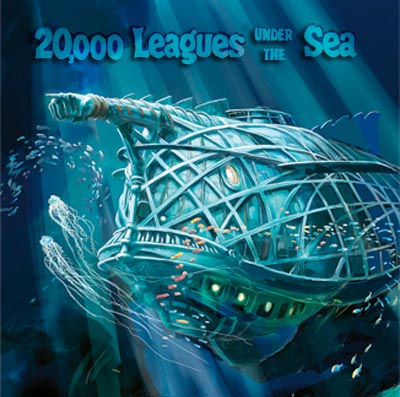Ned Land’s interview-
Interviewer- Today we have a special guest.
Please join me in welcoming Ned Land!
Ned Land- Hello
I- Hi! “Land” is a pretty amazing last name.
N- My name obviously comes from Land, which means “terra
firma” as often as I like to call it.
I- So “terra firma” means “land”?
N- Yes. It is a Latin phrase for solid earth, a phrase
used to differentiate from the sea.
I- Wow, that’s interesting. So for the people who don’t
know, what do you do for a living?
N- I am a harpoonist by trade, I hunt what is in the
sea, and you could say that I’m attached to the land.
I- How different are you, compared to Pierre Aronnax?
N- I am much “earthier” than he is. I don’t exactly
have the same social graces as him, and I lack Aronnax’s refined knowledge of
academic philosophy and culture.
I- Oh, but you saved everyone! Tell our viewer’s about
it.
N- I wouldn’t say “saved”, but I just didn’t agree with
Aronnax’s slow and deliberate plan to reason with Captain Nemo.
I- But you saved them, from the ship, and that is very
special.
N- It was nothing, but thanks.
I- So let’s go back to your hunting job. What exactly
is a “harpooner”?
N- A “harpooner” is someone that launches “harpoons”.
I- What is a “harpoon”?
N- A “harpoon” is a barbed spear like missile attached
to a long rope, that’s thrown by hand or fired from a gun.
I- When are they useful?
N- They are mainly used for catching whales.
I- Let’s tell the viewers at least three things that
they might not know about you. First thing?
N- You may not know that I am Canadian and I was
travelling on the “Abraham Lincoln”.
I- Second?
N- I am revered to as the “king” of harpooners.
I- Third?
N- If you want to know something a bit more personal,
well then, I am 45 years old, large, quiet, and I get angry when I am
contradicted.
I- Now I hope the viewers at home have learned a little
bit more about you.
N- Me to.
I- This is Ned Land everyone! Thank you for coming!
N- Thank you for having me!
Pierre Aronnax
Hello my
name is Pierre Aronnax. I am the main character, narrator, and protagonist of
the novel. I make uncertain references; gently respect social procedures and
procedures in organizations in situations. I am not willing to base my
relationship with the world around me on my senses. I rely completely on what I
read and my opinions. Some people say that my name is very close to the word
arrogant. People like to say a lot of things about me, like that I am very
arrogant about my intelligence and my ethnic character, but I don’t care what
other people think. I am honest and I am an observer of nationality and at
times I can be quite biased. Throughout the course of the novel I slowly ease
many of these faults. My major conflict in the my confrontation with the
Nautilus; when I had to choose between science and humanity, between learning
as much as I can and losing my heart in the process or trusting my fellow man
and his own senses.
Captain Nemo
Hi, so my
name is Captain Nemo and I guess I am the antagonist of the novel. I present
the situation that causes Pierre Aronnax to change, because I created the
Nautilus. You may also see me as a mysterious character, while others will just
see me as wicked perhaps? I do begin to frequently portray compassion and
sorrow throughout the novel. In Latin, Nemo means “nobody”. I can’t be
identified by a name- I ask people to call me Nemo, it’s more of a self chosen
name.
Quotes-
Ned Land- ..."I am not a butcher, I am a hunter and this was just butchers work."
Pierre Aronnax- "I repeat my view based on the logic of facts."
Captain Nemo- "Where are there not savages, and in any case, are those that you call savages any worse than the others?"





